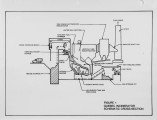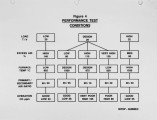| OCR Text |
Show - 5 - To characterize input and output, all incoadnCJ refuae and all the a.h •• collected were weiCJhed and repre.entative .a~le. analyzed. Each .a~l. va. analyzed for two vroups of cOlllpOWlda, organic., which con.i.ted of 41oxina, furana, chlorobenzene (CB), polychlorinated biphenyl. (PCB), polycyclic arOMtic hyckocarbone (PAR), and chlorophenol. (CP), and _tal., cOll.i.tinCJ of cadaiua (Cd), lead (Pb).:, _rcury (Bg) and twenty-•• ven other.. In a4dition, the combustion qaae. leaving the .tack wer •• a~led for the co-.pounda listed above, a. well a. for acid qa.e., auch as hydrogen chloride (Bel) , .ulphur dioxide ( 802) and nitrogen oxid.. (.Ox) , and conventional product. of combustion, .uch aa carbon .,nCDd.de (00), carbon 410xide (CO2)' oxygen (02) and total hydrocarbona (ftC). In all, al.:>at one thouaand saaple. were analyzed for orqanica and a co~rable number for inorCJanic •• The quantity of data generated on and off aite vas .taCJgerinCJ. AlIDost 8 _qa byte. of inforaUon were collect.d durinq each teat, coverinCJ process operations, continuous gas monitorinCJ and varioua t.lllperatur •• throuCJhout the .yete. every twenty .econda • Thi. required the 4evelop_Dt of • relatively portable and .o_what powerful coaputer-ba.ed data logging syate.. '!'be .y.te. waa al.o required to organiz. and analyze all the infor_tic:m collected froll the data logger ••• "ell .. thoe. frOll the field data .beete. A 1I1cro-computer ba.ed ay.te. ".. developed and e~loyed whicb coW.d .tore and analyze all the data collected during each teat day. Three .eparate Ilicro-colllpUter-ba.ed syste_, link.d into a network, were cho.en for thia task (.ee fiC)ure 5). The fir.t sy.tea va. used to collect continuous qa. data from the combustion exhaust ga.... The second .y.te. collected and analyzed -incinerator procesa data, vh1le the thJ.rd &y.te. collected rea41nCJ. froll two temperature ther.acouple gri48 installed in the radiation cha.mer zOlles of the furnace. Each of the cOIIpUter .y.te. provided a -real ti.- graphic and .tati.tical analysi. of selected 109CJ84 data. Thi. provided cm-the-.pot .onitor1nq of the proqr ... of the te.ta to enable project -.nager. to .ake deci.ions quickly. In addition, plot. of cODcentrationa, te~ratur .. and proce •• data veraua ti_ were displayed on the c~er .creen on an bourly int.rval to oheerve trends. Upon colllpletion of each test day, the da ta CJ8nera ted vaa proce •• ed by a aecond crew overniCJht to verify and correct all data, to reduce the data and produce detailed tables, 8UlIIIDIlriea ' and graphic. for the Field Te.t Report. '!'hia provided the field project anaqer the opportunity to review the result a to aasea. the adequacy of the te.t and to evaluate it aCJainat previoua testa. At though alch of the groundwork vaa broken in planninCJ and field te.tinq : for PEl, particularly in tera of the .election of baaic _thoda and . protocol., the test proqrall in Quebec City departed from the fir.t with re.pect to: |















